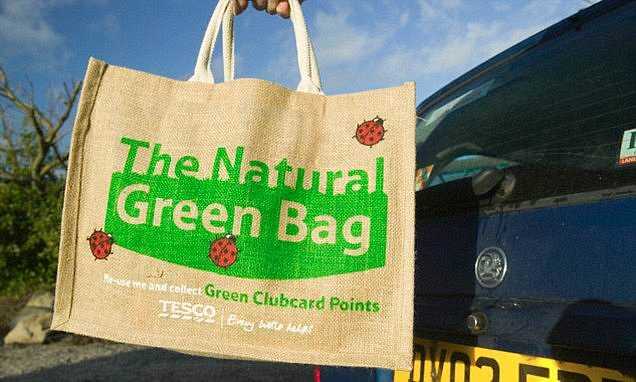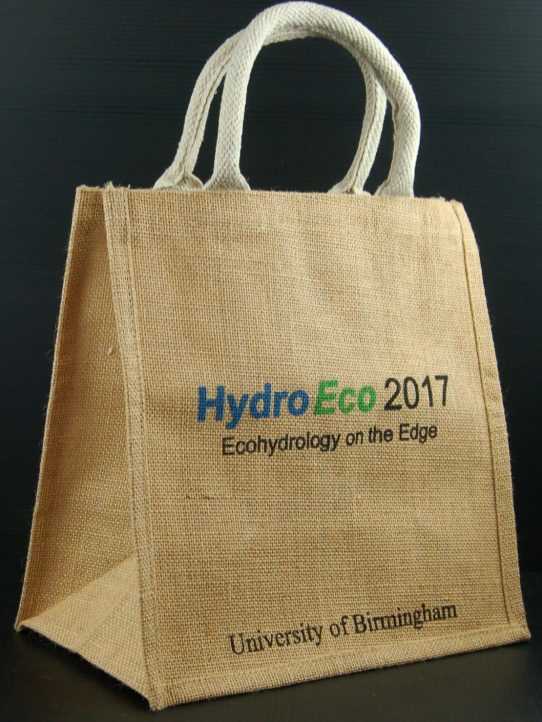
Plastic bags have long been a symbol of our throwaway culture, clogging up landfills and littering our streets and oceans. In an effort to reduce this environmental damage, many countries and cities around the world have implemented measures to discourage the use of single-use plastic bags. One solution that has gained popularity is the introduction of “bags for life,” reusable bags that are designed to be used multiple times and made from more durable materials.
Advocates for bags for life argue that they are a more sustainable alternative to single-use plastic bags. These bags are typically made from materials such as canvas, jute, or recycled plastics, which have a longer lifespan and are less likely to end up in the environment. The durability of these bags means that they can be reused many times, reducing the need for single-use bags and ultimately reducing the amount of waste.
In addition to their durability, bags for life also encourage a change in consumer behavior. The nominal cost associated with purchasing these bags serves as a deterrent to their disposal, incentivizing consumers to reuse them instead. This shift towards reusable bags can help to create a cultural shift away from our dependence on single-use plastics and towards more sustainable alternatives.
However, critics of bags for life argue that their environmental benefits may be overstated. While these bags may be more durable than single-use plastic bags, they are not entirely without environmental impact. The production of these bags requires resources and energy, and the disposal of them at the end of their lifespan can still contribute to waste if not handled appropriately.
In conclusion, bags for life can be seen as a step in the right direction towards reducing the environmental impact of plastic bags. They offer a reusable alternative that encourages a shift in consumer behavior and reduces the amount of waste generated. However, it is important to remember that no solution is perfect, and further efforts should be made to find truly sustainable alternatives to plastic bags.
- The Environmental Impact of Plastic Bags
- 1. Dependence on Fossil Fuels
- 2. Pollution and Litter
- 3. Resource Depletion
- Introducing Bags for Life
- The Benefits of Bags for Life for Consumers
- 1. Long-lasting and Durable
- 2. Cost-effective
- 3. Versatile
- 4. Reduced Environmental Impact
- The Benefits of Bags for Life for Retailers
- The Lifespan and Disposal of Bags for Life
- FAQ:
- Do bags for life really help the environment?
- What are the benefits of using bags for life?
- Are bags for life better for the environment than paper bags?
- Are bags for life really more durable than regular plastic bags?
- Are there any downsides to using bags for life?
- What are bags for life and why are they popular?
- Are bags for life better for the environment than single-use plastic bags?
The Environmental Impact of Plastic Bags
Plastic bags have become an integral part of our daily lives. They are lightweight, convenient, and easy to carry. However, their convenience comes at a cost. Plastic bags have a significant environmental impact that cannot be ignored.
1. Dependence on Fossil Fuels
Plastic bags are made from non-renewable resources, mainly fossil fuels such as crude oil and natural gas. The extraction and processing of these fossil fuels contribute to greenhouse gas emissions and air pollution. Additionally, the production of plastic bags requires significant energy consumption, further contributing to carbon emissions.
2. Pollution and Litter
Plastic bags are notorious for their impact on the environment when not properly disposed of. They are lightweight and easily carried by the wind, often ending up in rivers, lakes, and oceans. Marine animals such as turtles, seabirds, and whales mistake plastic bags for food, leading to ingestion and entanglement. This can result in injury, suffocation, and even death.
Moreover, plastic bags do not biodegrade but rather break down into smaller pieces known as microplastics. These microplastics can persist in the environment for hundreds of years, causing long-term pollution of waterways and ecosystems.
3. Resource Depletion
The widespread use of plastic bags contributes to the depletion of natural resources. Every year, millions of barrels of oil are used to produce plastic bags, which could otherwise be conserved or used for more essential purposes. By reducing our consumption of plastic bags, we can help conserve these valuable resources for future generations.
| Environmental Impact | Solutions |
|---|---|
| Increase in greenhouse gas emissions | Switching to reusable bags |
| Marine pollution and harm to marine life | Proper disposal and education on the importance of recycling |
| Depletion of oil reserves | Encouraging the use of sustainable alternatives and reducing plastic bag consumption |
It is evident that plastic bags have a significant negative impact on the environment. As consumers, we have the power to make a difference by choosing more sustainable alternatives such as reusable bags. By reducing our reliance on plastic bags, we can help protect our planet and create a cleaner, healthier future.
Introducing Bags for Life
Bags for Life are a type of reusable bag that are designed to be more durable and long-lasting compared to traditional plastic bags. They are made from thicker, stronger materials such as woven polypropylene or recycled plastic, which can withstand multiple uses without tearing or breaking.
The concept behind Bags for Life is to encourage consumers to reduce their reliance on single-use plastic bags and opt for a more sustainable alternative. By using Bags for Life, individuals can help reduce plastic waste and the environmental impact associated with their disposal.
Bags for Life are typically larger and more spacious than regular plastic bags, making them ideal for carrying groceries, shopping, or any other everyday items. They often feature reinforced handles and sturdy bottoms, allowing them to hold heavy loads without causing discomfort or damage.
What sets Bags for Life apart is their longevity. While traditional plastic bags have a lifespan of minutes or hours, Bags for Life can be used hundreds of times before they need to be replaced. This makes them a cost-effective option for both retailers and consumers.
| Advantages of Bags for Life | Disadvantages of Bags for Life |
|---|---|
| Reduce plastic waste | May require initial investment |
| Durable and long-lasting | Can be bulky to carry around |
| Spacious and can hold heavy loads | May be prone to staining |
| Cost-effective in the long run | Can be forgotten or misplaced |
Overall, Bags for Life offer a sustainable and practical alternative to single-use plastic bags. By making a small change in our daily habits and choosing to use Bags for Life, we can contribute to the reduction of plastic waste and make a positive impact on the environment.
The Benefits of Bags for Life for Consumers
Bags for life are an eco-friendly alternative to single-use plastic bags, and they offer several benefits for consumers. Here are some of those benefits:
1. Long-lasting and Durable
Unlike single-use plastic bags, bags for life are designed to be sturdy and durable. They are often made from materials like canvas, jute, or recycled plastics, making them much stronger and capable of carrying heavier loads. This durability means that consumers can reuse bags for life multiple times, eliminating the need for constantly purchasing new bags.
2. Cost-effective

While the initial price of a bag for life may be slightly higher than that of a single-use plastic bag, the long-term cost-effectiveness is undeniable. With their robust construction, bags for life can last for months or even years, whereas single-use plastic bags often tear or break after one use. By investing in a bag for life, consumers can save money in the long run by reducing their need to constantly buy new bags.
3. Versatile
Bags for life come in various shapes, sizes, and designs, making them incredibly versatile. Whether one needs to carry groceries, books, or any other items, there is a bag for life suitable for the task. Many bags for life also feature additional pockets and compartments, allowing consumers to keep their belongings organized and secure.
4. Reduced Environmental Impact

By choosing to use bags for life instead of single-use plastic bags, consumers can significantly reduce their environmental impact. Bags for life are typically made from more sustainable materials and can be reused countless times. They also help to minimize the demand for single-use plastic bags, which often end up in landfills or pollute the oceans.
In conclusion, bags for life offer numerous benefits for consumers. They are long-lasting, cost-effective, versatile, and contribute to reducing the overall environmental impact. Choosing to use bags for life is not only an eco-conscious decision but also a practical and beneficial choice for consumers.
The Benefits of Bags for Life for Retailers
Switching to bags for life can provide several advantages for retailers:
1. Cost-effectiveness: While bags for life may have a higher upfront cost than single-use bags, they are designed to be durable and long-lasting. This means retailers can save money in the long run by not having to constantly restock their bag supply.
2. Branding opportunities: Bags for life can be customized with a retailer’s logo or design, creating a walking advertisement for their brand. This visibility can help increase brand recognition and attract new customers.
3. Customer loyalty: Offering bags for life shows that a retailer is committed to sustainability and reducing plastic waste. This can resonate with eco-conscious customers and help build a loyal customer base that values a retailer’s environmental efforts.
4. Environmental responsibility: By providing bags for life, retailers can contribute to reducing the production and disposal of single-use plastic bags. This can have a positive impact on the environment and help protect wildlife and ecosystems from the harmful effects of plastic pollution.
5. Positive public perception: Embracing bags for life can improve a retailer’s reputation and enhance their brand image. Customers are increasingly concerned about the environmental impact of their shopping choices, and showing a commitment to sustainability can attract positive attention from both customers and the media.
Overall, bags for life can be a beneficial choice for retailers, offering cost savings, branding opportunities, customer loyalty, environmental responsibility, and a positive public perception. By making this shift, retailers can contribute to a greener future and align themselves with the growing demand for sustainable practices.
The Lifespan and Disposal of Bags for Life
Bags for life are designed to be durable and reusable, with a longer lifespan than single-use plastic bags. The exact lifespan of a bag for life can vary depending on factors such as the material it is made from, how frequently it is used, and how well it is maintained.
On average, a bag for life is estimated to be able to carry around 50 to 100 times more items than a single-use plastic bag before it starts to show signs of wear and tear. This means that one bag for life can replace multiple single-use bags over its lifetime, reducing the demand for plastic bags and the associated waste.
However, like all products, bags for life do eventually wear out and need to be replaced. When a bag for life reaches the end of its usable lifespan, it is important to dispose of it properly. Most bags for life are made from materials such as polypropylene or polyester, which are not easily recyclable.
One option for disposal is to reuse the bag for other purposes, such as storage or as a bin liner. This can extend the lifespan of the bag and delay its entry into the waste stream. However, eventually, the bag will need to be disposed of.
If a bag for life cannot be reused, it should be disposed of in the appropriate recycling or waste bin. Some retailers or local authorities provide recycling programs specifically for bags for life. These programs often involve collection points where bags can be returned for recycling.
It is important to note that bags for life should not be treated as a long-term solution to the plastic bag problem. While they may be more environmentally friendly than single-use bags in the short term, they still contribute to plastic waste and can end up in landfills or oceans if not properly disposed of.
| Pros | Cons |
|---|---|
| Reusable and durable | Not easily recycled |
| Can replace multiple single-use plastic bags | Can contribute to plastic waste if not properly disposed of |
| Reduces demand for plastic bags | May eventually need to be replaced |
| Can be reused for other purposes |
In summary, bags for life have a longer lifespan than single-use plastic bags and can help reduce plastic waste. However, they are not easily recyclable and still contribute to plastic pollution if not disposed of properly. It is important to use and dispose of bags for life responsibly and explore other sustainable alternatives.
FAQ:
Do bags for life really help the environment?
Yes, bags for life can help the environment. They are reusable, which means they can replace single-use plastic bags that contribute to pollution. By using a bag for life instead of a single-use bag, you can reduce the amount of plastic waste that ends up in landfills or in the ocean.
What are the benefits of using bags for life?
The benefits of using bags for life include reducing plastic waste, conserving resources, and saving money in the long run. Plastic bags take hundreds of years to break down, so by using a bag for life, you can help reduce the amount of plastic that ends up in the environment. Additionally, bags for life are usually made from more durable materials, which means they can be used multiple times before needing to be replaced. This can save you money in the long run, as you won’t need to constantly buy disposable bags.
Are bags for life better for the environment than paper bags?
Generally, bags for life are considered to be better for the environment than paper bags. While paper bags can be recycled, they also require a significant amount of resources to manufacture. Bags for life, on the other hand, can be reused multiple times, reducing the overall environmental impact. However, it’s important to note that the environmental impact of a bag depends on a variety of factors, including its production process and how it is disposed of at the end of its life.
Are bags for life really more durable than regular plastic bags?
Yes, bags for life are typically more durable than regular plastic bags. They are often made from thicker materials, such as canvas or woven polypropylene, which makes them stronger and more resistant to tearing. This durability allows bags for life to be used multiple times, reducing the need for single-use bags. However, it’s important to note that the lifespan of a bag for life can vary depending on how it is used and cared for.
Are there any downsides to using bags for life?
While bags for life have many environmental benefits, there are a few downsides to consider. One downside is that bags for life are typically more expensive upfront than single-use plastic bags. However, they can save you money in the long run since they can be reused. Another downside is that bags for life can accumulate bacteria if not properly cleaned, so it’s important to regularly wash them to maintain hygiene. Additionally, some people may find bags for life to be less convenient than single-use bags since they can be bulkier and take up more space.
What are bags for life and why are they popular?
Bags for life are reusable shopping bags that are designed to be used multiple times. They are popular because they are more durable than plastic bags and can be used for a long time without tearing or breaking.
Are bags for life better for the environment than single-use plastic bags?
Yes, bags for life are better for the environment than single-use plastic bags. Single-use plastic bags are usually only used once and then thrown away, whereas bags for life can be used multiple times. This reduces the amount of plastic waste that ends up in landfills or pollutes the environment.